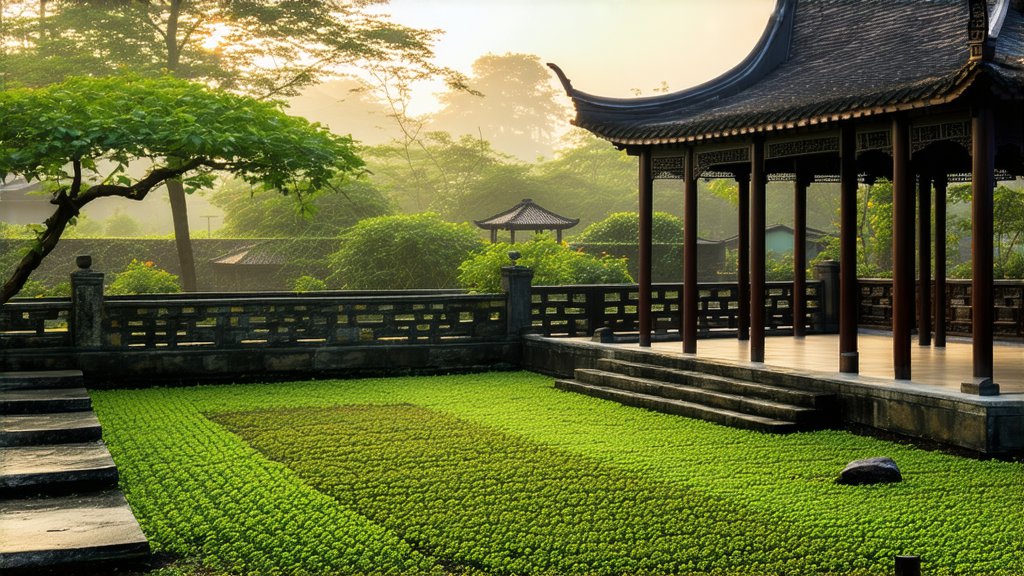
**
Silver Needle White Tea, a gem within the crown of Chinese tea culture, stands as an epitome of elegance and simplicity. Originating from the misty mountains of Fujian province, this exquisite tea has captivated connoisseurs worldwide with its subtle flavors and ethereal beauty. In this exploration, we delve into the rich history, intricate craftsmanship, and nuanced art of appreciating Silver Needle White Tea.
A Glimpse into History
The story of Silver Needle White Tea (Baihao Yinzhen in Mandarin) traces back to the early Qing Dynasty, around the 1790s. It was during this time that the village of Fuding in Fujian province began producing this unique tea, distinguishing itself from other white teas due to its pristine appearance and minimal processing. Legend has it that the tea was initially created by a noblewoman who covered tea buds with a bamboo basket to protect them from the harsh sun, inadvertently creating the perfect conditions for the development of its distinctive character. Over centuries, Silver Needle has evolved, yet it remains a symbol of purity and tradition in Chinese tea culture.
Varieties and Characteristics
True to its name, Silver Needle White Tea consists solely of the unopened buds and young leaves of the tea plant, typically from the Da Bai (Big White) or Fuding Big White tea tree variety. These buds are meticulously plucked before they fully open, ensuring the highest quality. When dry, they resemble slender needles coated in a fine layer of downy hairs, giving them a shimmering silver hue—hence the name "Silver Needle."
There are two main grades of Silver Needle: Grade 1, which includes only the finest, most delicate buds, and Grade 2, which may contain slightly more mature leaves but still maintains a high standard of quality. Both grades offer a taste experience that is light, floral, and subtly sweet, with a hint of fruitiness and a lingering finish that speaks volumes of its natural sophistication.
The Art of Craftsmanship
The production of Silver Needle White Tea is an art form that emphasizes minimal intervention to preserve the tea's inherent qualities. The process begins with careful handpicking of the freshest buds and leaves, usually in early spring when they are at their tender peak. Unlike green or oolong teas, Silver Needle undergoes no rolling or shaping; instead, it is simply spread out to wither naturally under the sun or in a controlled environment.
This withering process is crucial as it allows the tea to lose moisture gradually while enhancing its aroma and flavor profile. Following withering, the tea is lightly dried, often using low-temperature baking or sun-drying methods, which further refine its delicate characteristics without imparting any additional flavors. The result is a tea that embodies the essence of its terroir, capturing the purity of nature intended.
Appreciating the Sensory Symphony
To truly appreciate Silver Needle White Tea, one must engage all five senses in a meditative ritual. Begin by observing the dry leaves, noting their slender shape and silvery sheen. As you measure approximately 3-5 grams per 200ml of water into a transparent glass teapot or gaiwan, take a moment to admire their beauty.
Infuse the tea with water heated to around 80-85°C (176-185°F), allowing the leaves to dance gracefully as they unfurl. The initial steeping should be brief, around 1-2 minutes, to extract the tea's subtleties without overwhelming its delicate nature. Subsequent infusions can be longer, coaxing out deeper flavors and aromas.
Observe the liquor, a pale gold hue reminiscent of sunlight filtering through foliage. Inhale deeply to catch the subtle fragrances of honey, melon, and fresh hay. Take your first sip slowly, letting the tea glide over your palate, savoring its silky texture and gentle sweetness. Notice how it lingers on your tongue, leaving a cleansing aftertaste that invites contemplation.
For an enhanced experience, pair Silver Needle with light snacks like almond cookies or fresh fruits, which complement rather than compete with its refined flavors. This tea also pairs beautifully with quiet moments of reflection or intimate gatherings where conversation flows as effortlessly as the tea itself.
Conclusion
Silver Needle White Tea is more than just a beverage; it is a testament to the harmony between man and nature, a bridge connecting past traditions with present-day appreciation. Its journey from the ancient hills of Fujian to tea cups around the world tells a story of patience, respect for nature, and an unwavering commitment to quality. As you embark on your own journey with this exceptional tea, may each sip transport you to a realm where time slows down, allowing you to savor life's simple pleasures.